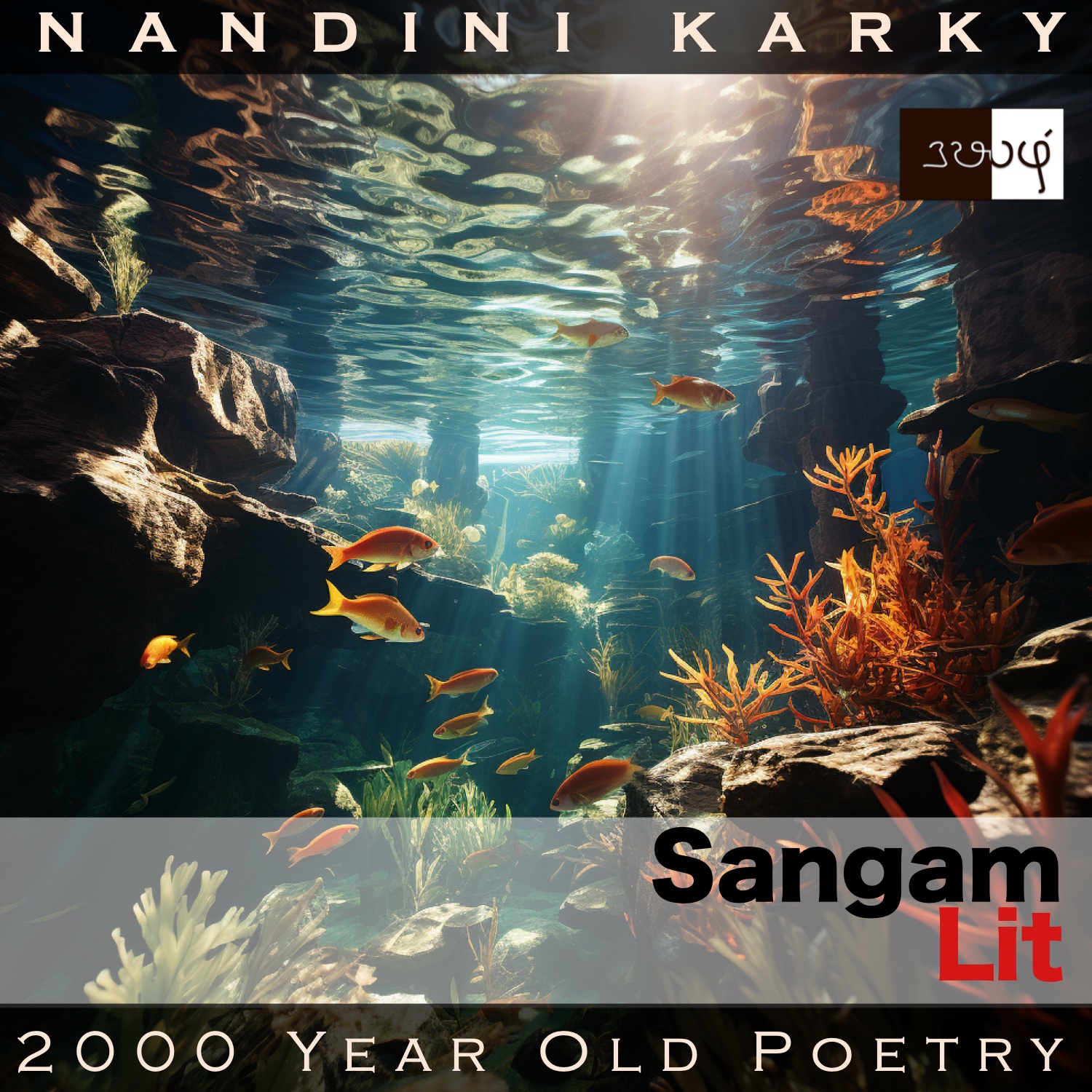Podcast: Play in new window | Download
Subscribe: Apple Podcasts | Spotify | Amazon Music | Android | iHeartRadio | TuneIn | RSS | More
In this episode, we learn of a land’s prosperity and a leader’s hospitality, as depicted in Sangam Literary work, Puranaanooru 249, penned by the poet Thumbai Sokinanaar. The verse is situated in the category of ‘Pothuviyal Thinai’ or ‘Common Themes’ and reveals the sorrow of a woman after the demise of her husband.

கதிர் மூக்கு ஆரல் கீழ் சேற்று ஒளிப்ப,
கணைக் கோட்டு வாளை மீநீர்ப் பிறழ,
எரிப் பூம் பழனம் நெரித்து உடன் வலைஞர்
அரிக் குரல் தடாரியின் யாமை மிளிர,
பனை நுகும்பு அன்ன சினை முதிர் வராலொடு,
உறழ் வேல் அன்ன ஒண் கயல் முகக்கும்,
அகல் நாட்டு அண்ணல் புகாவே, நெருநைப்
பகல் இடம் கண்ணிப் பலரொடும் கூடி,
ஒருவழிப்பட்டன்று; மன்னே! இன்றே,
அடங்கிய கற்பின், ஆய் நுதல் மடந்தை,
உயர் நிலை உலகம் அவன் புக,…. வரி
நீறு ஆடு சுளகின் சீறிடம் நீக்கி,
அழுதல் ஆனாக் கண்ணள்,
மெழுகும், ஆப்பி கண் கலுழ் நீரானே.
A song of contrasts! The poet’s words can be translated as follows:
“The eel, with a nose, akin to a spindle, hides under the mud, while the sword fish, with its arrow-like snout, leaps above the water in the pond with flaming flowers. Coming close to this pond, fishermen wielding nets enter it, making a rhythmic sound in the voice of ‘thadari drums’, which startles the turtles. They then catch pregnant murrel fish, akin to palmyra shoots, and spear-like, radiant carp fish in the wide country of the esteemed leader. When one considers where he used to partake his food, that was a huge space to bring together many people as one. But that is no more! Today, after he departed to the higher world, his maiden with eyes that cease not crying, with a contained virtue and a glowing forehead, so as to serve him food, cleanses a space as small as a bamboo winnow, with the cloudy tears of her eyes.”
Time to delve into the nuances. The poet begins with a detailed description of wildlife, starting with a sand-eel, whose nose he connects with a weaver’s spindle, and he mentions how it hides under the mud. He then talks about a sword-fish and yet again, equates its sharp snout to an arrow, and points to us, the way it leaps above the water. All this is happening in a pond filled with flowers and fishermen near this pond to enter it, with nets in their hands, the poet sketches. From visual imagery, the poet turns to auditory imagery and mentions how the way they enter the water sounds like the soft beats of a particular type of drum called ‘thadari’. Next, he talks about the catch they return with, saying there’s a lot of murrel fish, carrying eggs that too, akin to a palm tree’s shoots and carp fish also, akin to spears. A zoologist’s delight, undoubtedly! Returning, we discover that the poet has mentioned all these animals only to say such is the fertile land of this leader. A single pond and all the wildlife that thrives there and how it fills the fishermen’s life with wealth is sketched by these few lines!
The poet then recollects how the leader used to dine in those days past. He says the leader would bring together a lot of people as one in a huge space and render unto them food and hospitality. Now the poet reverts to the present and concludes lamenting that all that is lost, because he is no more and his wife now clears a space as small as a winnow, and washes it with her tears, before she serves food to her dead husband. He thus emotionally sketches the suffering of this lady, whose tears cease not, long after her husband had departed. We also find mention of this tradition of serving food to the dead, a practice that goes on till today in many regions of India, and though the dead never come to feed on this food, it serves to sustain other living beings. Ironic how a song on the death of a leader happens to tells us so much about the lush life in an ancient ecosystem!




Share your thoughts...